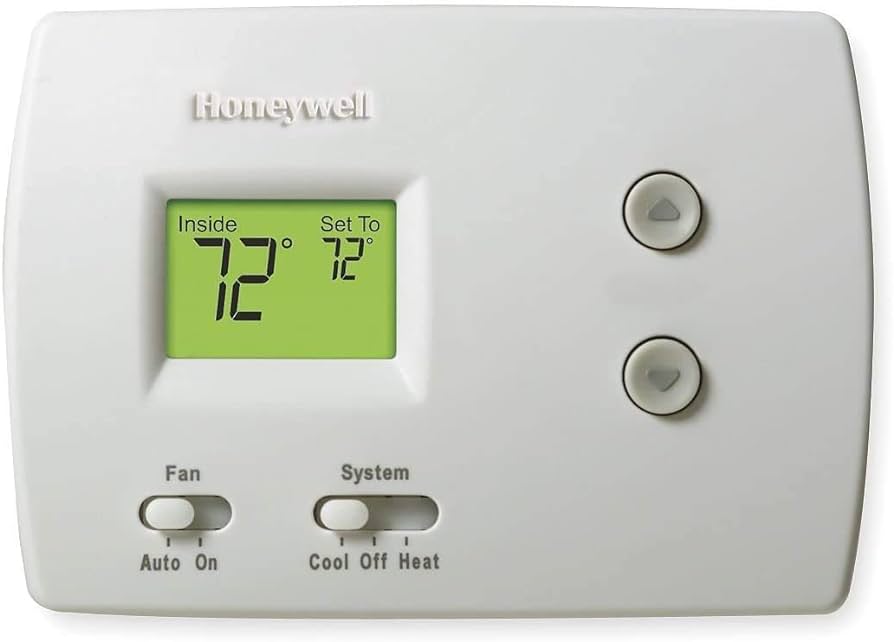A digital thermostat offers automated control over your home’s temperature, enhancing comfort while saving energy. Nearly 40% of homeowners in the United States have programmable thermostats, according to the U.S. Energy Information Administration. However, many individuals struggle to capitalize on this technology’s benefits due to difficulties with setup and operation. This comprehensive guide will assist you in mastering your digital thermostat setup, employing 14 subheadings for clarity and ease of navigation.
Understanding Your Digital Thermostat
Your journey towards thermostat mastery begins with understanding how your thermostat works. It functions as the control panel for your heating system – essentially telling it when to turn on and off based on the digital thermostat settings you input. Programmable models allow you to set different temperatures for specific time periods throughout the day or week. This functionality can save energy and money by reducing heating during hours when your home is empty or everyone is asleep.
Familiarizing Yourself with Your Thermostat model
No two digital thermostats are the same. Therefore, getting acquainted with your personal model is crucial for successful use. Start by identifying the manufacturer and model number on your device, usually found on a sticker at the back or within its battery compartment. Then, find and carefully read through your model’s manual – you should get all specifics about operation, programming, and troubleshooting from this resource.
Reading Performance Indicators
When it comes to troubleshooting a digital thermostat, understanding its performance indicators is paramount. Perhaps your heating system is not running as expected, or your bills are higher than usual – these are issues that might be addressed through a thermostat settings tweak. Knowing these details can help you recognize patterns and assess where improvements may need to be made.
Setting the Correct Time and Date
Most digital thermostats require the correct time and date to operate efficiently. Ensuring that these details are accurate is usually one of the first steps in the setup process. Incorrect time or date settings can interfere with programmed schedules, leading to inconsistent heating and potential energy waste.
Choosing Your Temperature Preferences
Your comfort is essential. Thus, choose temperature preferences that suit your lifestyle and comfort levels. However, remember that setting your thermostat too high can lead to unnecessary energy consumption. It is typically recommended to aim for 68 degrees Fahrenheit (20 degrees Celsius) for heating and 78 degrees (25 degrees Celsius) for cooling where possible.
Programming Your Thermostat’s Schedule
With a digital thermostat, you get the option to set specific temperatures at different times. You could lower the temperature when you are away or asleep and have it rise just before you return home or wake up. Not only does this increase comfort, but it promotes energy savings as well.
Utilizing the Hold Function
This function allows you to temporarily override your thermostat’s programmed schedule. Useful when you are home when you would usually be away or vice versa. Use it reasonably to prevent potential energy wastage, making sure to resume your programmed schedule once done.
Optimizing Air Circulation
Your thermostat would work better if air circulation in your house is optimal. Therefore, make sure vents are unblocked, filters are clean, and that airflow is generally well-distributed throughout your home. Doing this will ensure accurate temperature readings and efficient system operation.
Regular Maintenance
Like any device, maintaining your digital thermostat regularly is key in ensuring its longevity and performance. Make sure you dust off your thermostat regularly, inspect it for possible damage, and replace batteries if necessary.
Avoiding Common Mistakes
Avoid common errors that can impede your digital thermostat’s performance or efficiency. These include placing it near heat sources, frequent temperature changes, and ignoring time and date updates. These habits can affect the overall performance of your thermostat and possibly lead to increased energy wastage.
Aligning with Seasonal Changes
With changing seasons come fluctuating temperatures. Adjust your thermostat accordingly to accommodate these changes without affecting overall comfort or efficiency. This practice should form part of your preparation for a new season.
Taking Advantage of Smart Technology
Some digital thermostats are Wi-Fi enabled, giving you the ability to control your device remotely using a smartphone app. Exploit this feature to fine-tune your settings even when you are away from home and make quick adjustments in case of sudden weather changes.
Learning from Professionals
Contact a professional HVAC technician if you face difficulties in setting up your digital thermostat. They can provide expert guidance, help troubleshoot issues, and offer tips on maximizing energy savings. Remember, consulting an expert is beneficial should you reach a roadblock during setup.
Your Final Notes
Mastering the setup of your digital thermostat is not solely about achieving the perfect temperature for comfort: it is also about optimizing power usage for energy conservation and cost savings. Understanding how your device operates will ensure you capitalize fully on its benefits. Regular maintenance, sensible programming, learning from professionals – all these are steps to a more efficient and comfortable home experience. Take command of your smart home and enjoy the convenience of an optimally set digital thermostat.
SME Paid Under

